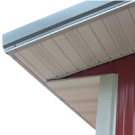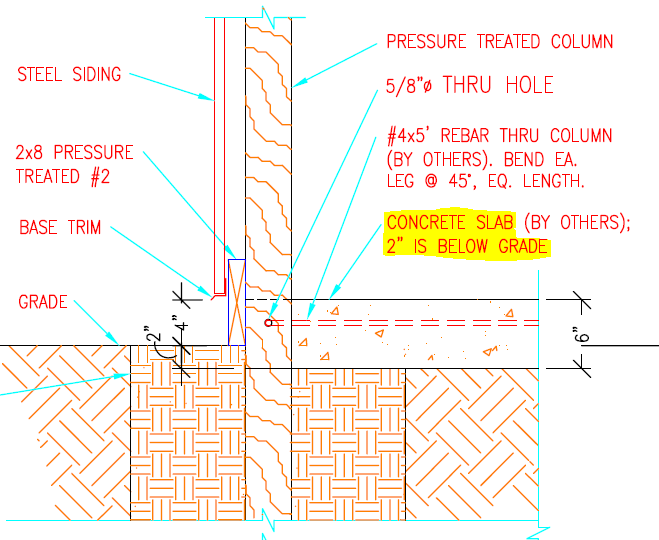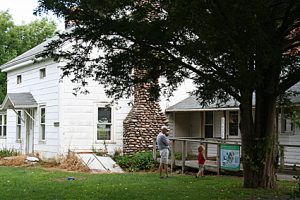Had you going with the title, didn’t I?
Kutyaharapást szőrével is Hungarian for “The hair of the dog”. The English saying “the hair of the dog” dates back to the days of Shakespeare, and deals with curing a hangover with even more alcohol! Similarly, I want to cure the lack of building overhangs, with information allowing potential building owners to make informed decisions.
Once it had been decided to utilize overhangs as a building feature (good choice) and an overhang size has been determined, the real nitty-gritty of overhangs begins.
 Paraphrasing Shakespeare’s bard Will, “To be open, or not to be open, that is the question”. Overhangs can either be open (which has nothing to do with allowing flying things like birds and Rocket J. Squirrel into the building) or enclosed. With “open” overhangs, as one stands beneath the overhang and looks straight up, the wooden framing which supports the fascia board, fly rafter and overhanging roof sheathing is exposed to the eye. The overhang IS, however, completely closed to letting the outside weather (insects/birds) into the building. It’s the overhang area which is not enclosed…no horizontal soffit panels.
Paraphrasing Shakespeare’s bard Will, “To be open, or not to be open, that is the question”. Overhangs can either be open (which has nothing to do with allowing flying things like birds and Rocket J. Squirrel into the building) or enclosed. With “open” overhangs, as one stands beneath the overhang and looks straight up, the wooden framing which supports the fascia board, fly rafter and overhanging roof sheathing is exposed to the eye. The overhang IS, however, completely closed to letting the outside weather (insects/birds) into the building. It’s the overhang area which is not enclosed…no horizontal soffit panels.
With enclosed overhangs, soffit material of steel, aluminum, vinyl, wood or cement (the most common materials) is placed so as to cover the underside of the framing.
Open overhangs will be slightly less expensive than enclosed. They do not afford the ability to ventilate the building, and wood members, while not exposed to the weather, will age and grey with time. Open overhangs also provide a favored nesting place for yellow jackets and other wasps, as well as barn swallows. Places where open overhangs do look appropriate is on the low sidewall eave overhangs of roof only sheds, buildings with one or more sides open, or roof only “pavilion” type structures.
Enclosed overhangs are generally accepted as being far more attractive, as well as maintenance free. The least expensive (and least functional) solution for soffits is with non-vented materials. Most common with steel covered buildings are one piece trims which cover both fascias and the soffit, or the use of steel roofing/siding panels for soffit material. The first tends to “oil can” or appear wavy with from expansion and contraction due to heat and cold cycles. The second, in the opinion of many, just looks cheap.
Aluminum soffit is not favored as it can create electrolysis issues from dissimilar metals in contact with each other. Vinyl and steel soffit panels come in a wide array of colors, both to match and compliment the balance of the building colors. Both are available as vented, which allows air flow into the building, reducing issues of condensation, as well as stagnant air in animal housing. The ventilation holes are small enough, so as to prevent flying insects to enter through them. In combination with an adequately vented ridge, vented overhangs can provide for an effective passive ventilation system.
Ön élveznek kinyúlása, or “enjoy your overhang”.









